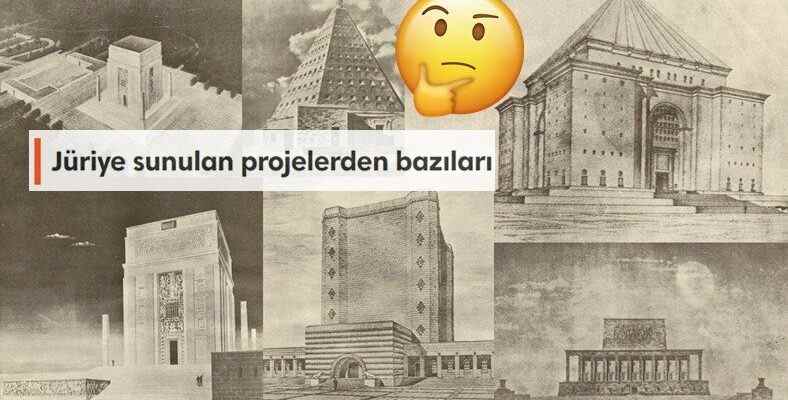Have you ever wondered how Anıtkabir, the eternal resting place of the Great Leader Gazi Mustafa Kemal Atatürk, the founder of our country and our Republic, was built?
Throughout the history, every statesman who has cost a nationAfter his death, he was sent off to his last journey with magnificent ceremonies and buried in special graves. This tradition is a deep-rooted tradition maintained by almost every state.
Founded in 1923 Ataturk, the founder of our republic When he passed away, a difficult process began for the continuation of this tradition. With the deep pain of losing Atatürk, the state officials of the period; They were also considering where the leader of the Turkish nation should be buried. Let’s examine the progressing processes together.
A burial chamber was opened in Ethnography as a temporary resting place.
Atatürk, who passed away on the morning of November 10, He was not buried until November 21.. During the 11 days that passed, the Great Leader’s body was greeted by floods of people while passing through many points, a moment of silence and ceremonies were held. Dozens of citizens lost their lives and thousands were injured in the stampede.
The government of the period said that a special memorial site should be built for the Great Leader, but since there is no such place, Atatürk’s body was destroyed. temporarily in the Ethnographic Museum decided that it should be preserved.
Funeral prayers were not made public to prevent stampedes.
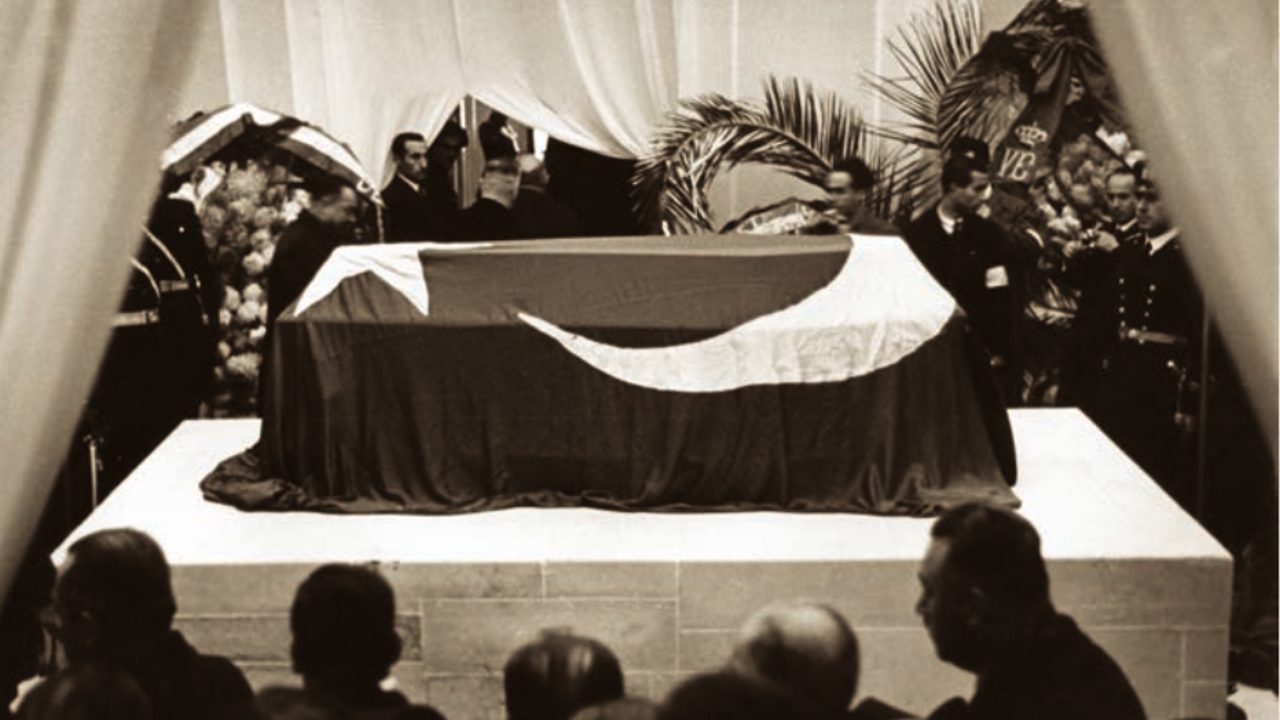
- Ata’s body is in Ethnography
Atatürk’s body with a ceremony 2 days before being brought to the Ethnographic Museum; President of Religious Affairs Rıfat Börekçi, Director of the Institute of Islamic Studies Ord. prof. According to many sources, funeral prayers were held in the “palace” where no one was allowed in except for Mehmed Şerafettin Yaltkaya, senior state officials, military personnel and people very close to Ata.
In order to prevent stampedes, the funeral prayer was not performed in the mosque, and important religious scholars were asked about the possibility of performing the funeral prayer outside the mosque. Images of this moment were never taken by the state. Although it was filmed, it was not published, but contrary to the claim Atatürk’s funeral prayer was definitely performed.
Temporary burial at the Ethnographic Museum
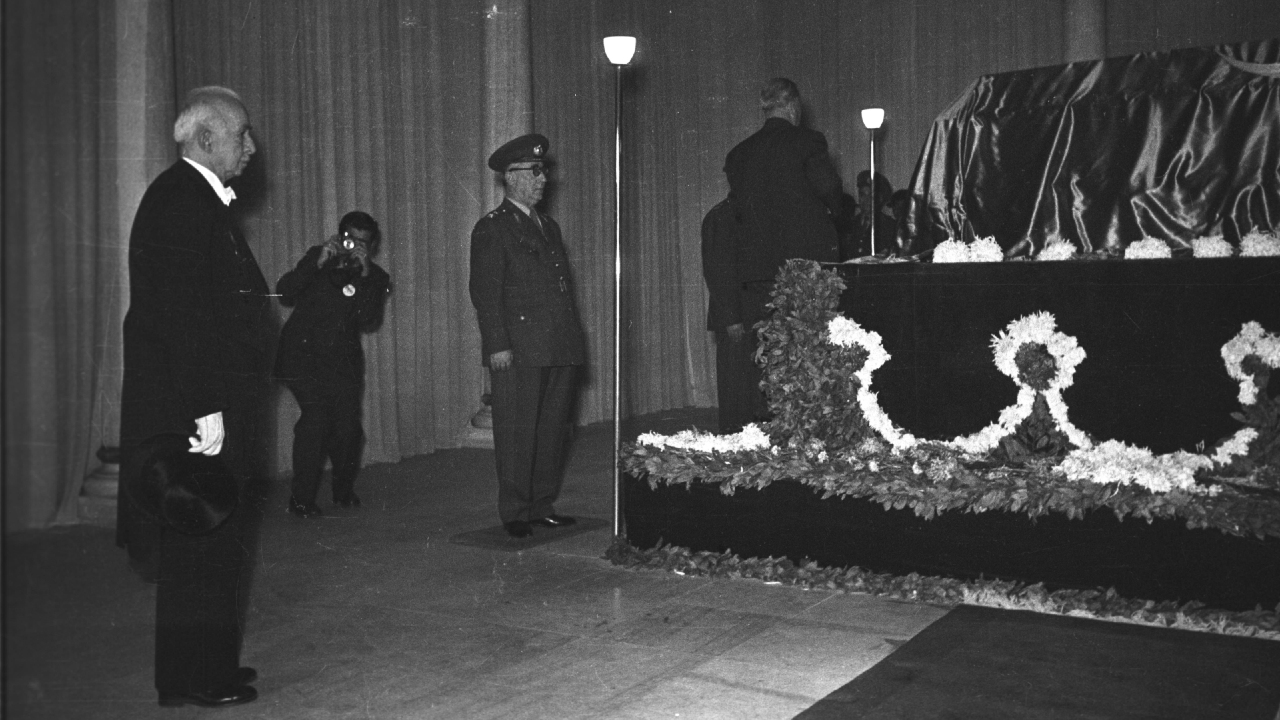
- İsmet İnönü, while standing in silence in the presence of Ata before the transfer procedures in Ethnography
When Atatürk’s body was brought to the Ethnography Museum on November 21, a special burial chamber was opened for him. of the Great Leader embalming process in order not to spoil the body done. During the embalming process, some chemicals were prepared to prevent the deterioration of the body, and these drugs were injected into Atatürk’s dead body. Then, he was wrapped in oilcloth and special solutions and shrouded in a special coffin. You can access the details of the embalming process in detail from our content here.
The process of determining the place for Atatürk’s final resting place
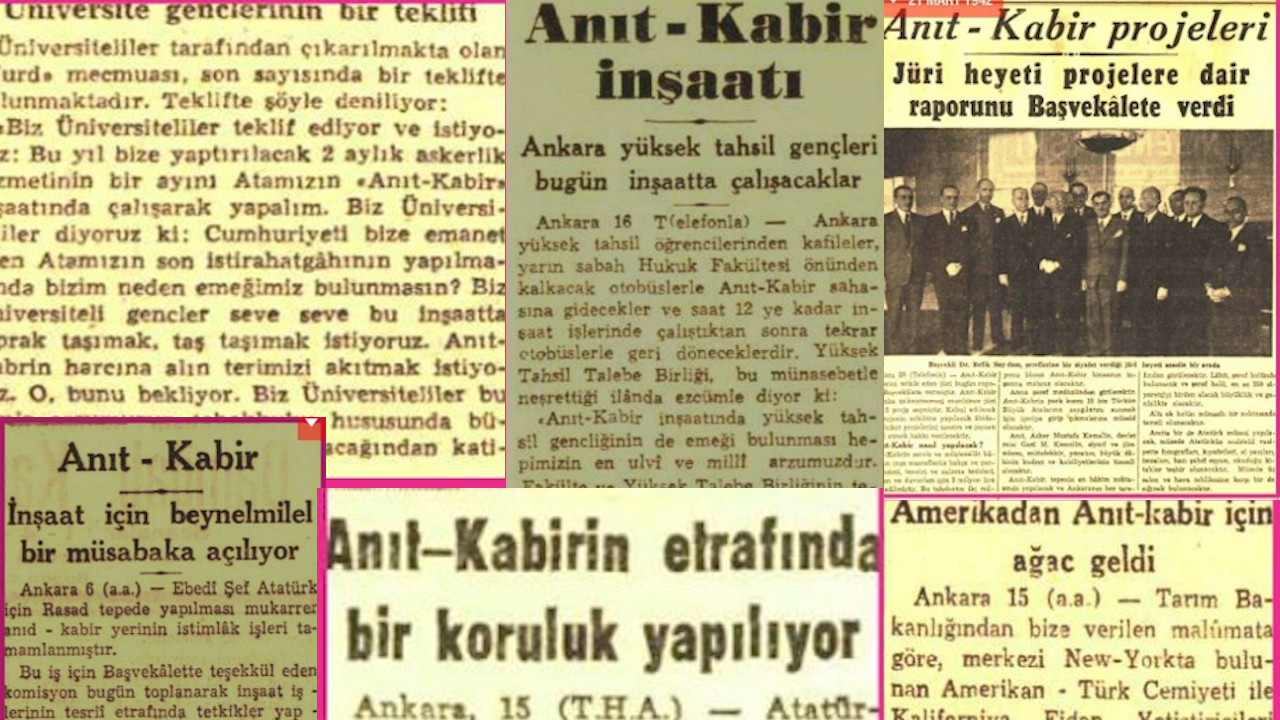
After the Great Leader’s body was temporarily buried in Ethnography, the process of choosing a place for a permanent monument began. Atatürk did not have a clear recipe for where he wanted to be buried before he died, but at a dinner with his close friends. “Bury me in Çankaya” he said. The next day after this meal, to his brother Makbule Atadan; He said, “I said to Çankaya last night, but bury me wherever my people want.”
Upon this will, for the construction of monuments in the Grand National Assembly of Turkey Location Commission was established. With the suggestion of Mithat Aydın, Trabzon Deputy Civil Engineer in this commission, RasattepeIt was decided in .
The reason why Rasattepe was chosen and the progress
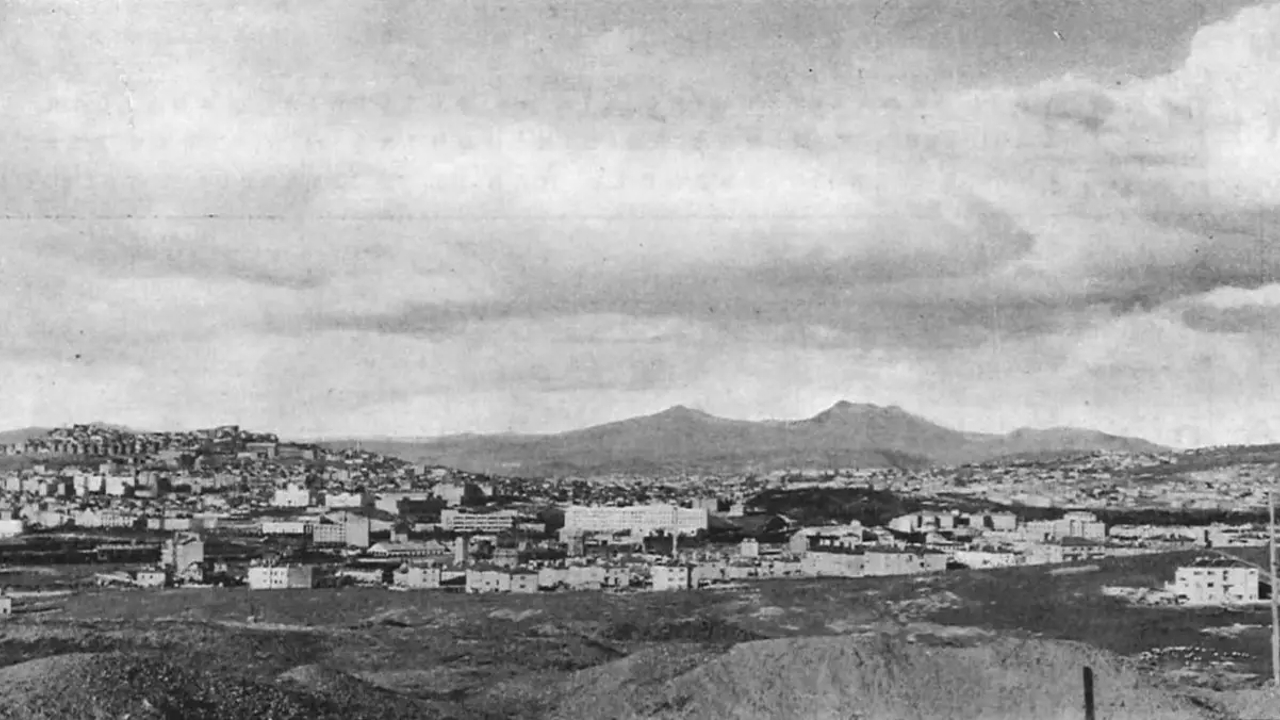
Rasattepe
The fact that Rasattepe was a high position under the conditions of that day Easy to see from anywhere in AnkaraIt was approved for reasons such as being a large area, being close to the center and the Parliament, and being within the borders of Çankaya as Ata wanted.
Mostly state owned Part of Rasattepe was private property and in a short time all of Rasattepe was expropriated.
Competition opened for the monument project
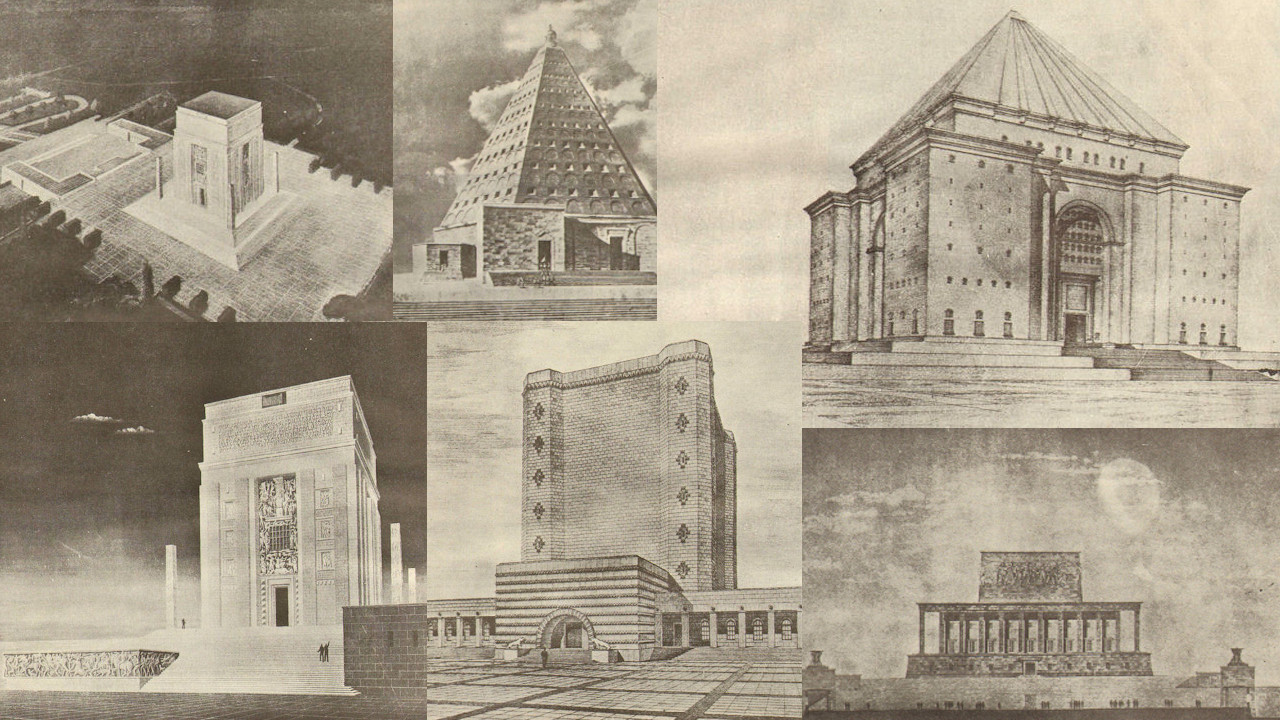
- Some of the projects submitted to the jury
On March 1, 1941, an international competition was announced in which foreign architects could also participate. At the end of 1 year, the jury consisting of local and foreign members; 25 domestic total out of 49 projects He announced that 3 projects made it to the finals. Among these 3 projects, 2 of which were foreign, the project of Mehmet Emin Onat and Ahmet Orhan Arda was selected first, but due to inadequacy, the project could not be approved.
The jury said that the first selected project could be approved provided that the necessary arrangements were made, and the project was approved after the arrangements were made. The most sensitive point that the jury focused on in the project, Devotion to Anatolian historyti.
Preparation process of the construction and studies
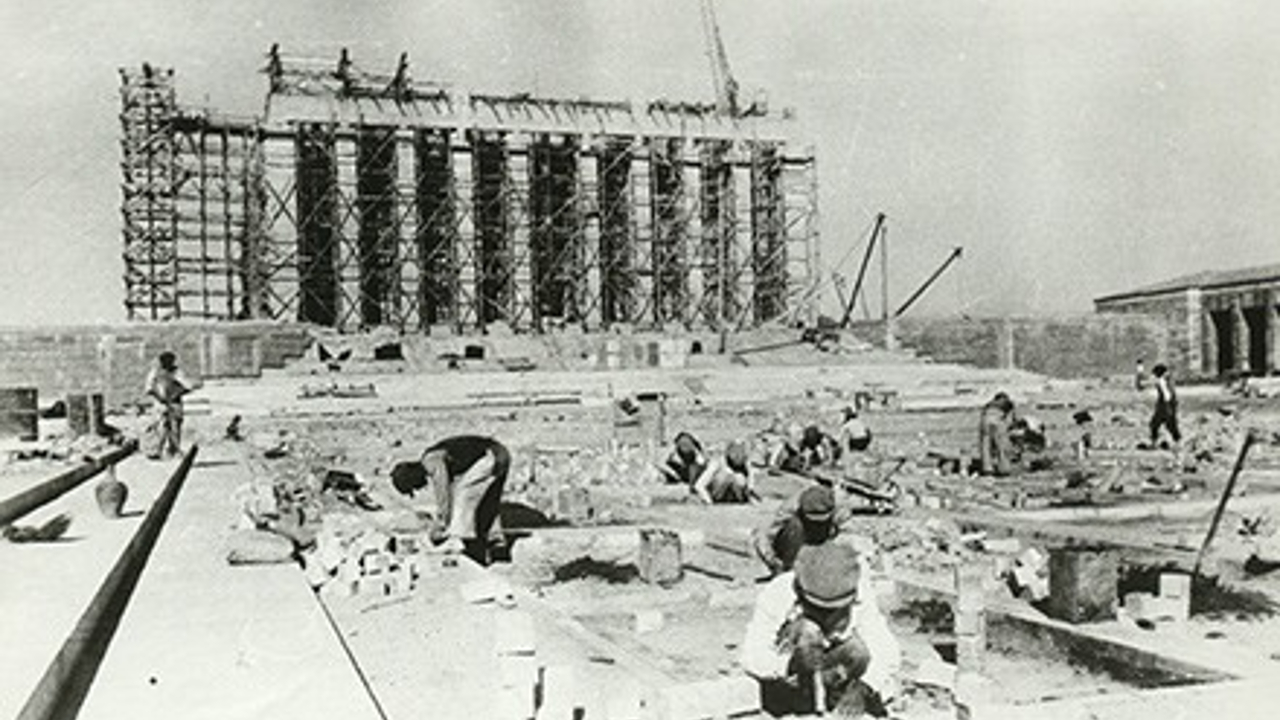
Due to the fact that Rasattepe, which was chosen for the monument, is barren, afforestation works have started in the region. Selected trees were brought from various parts of the world and the region was saved from barrenness. For the project, which is now called Anıtkabir by newspapers and state administrators, the state, 24 million pounds allocated a budget.
During the construction excavations in the region, Important historical remains belonging to the Phrygian Period found. Due to the discovery of historical ruins, the Turkish Historical Society conducted studies in the region for a while and the first phase of the Anıtkabir project could not be completed in the expected time.
Ground report, tender process and various disruptions
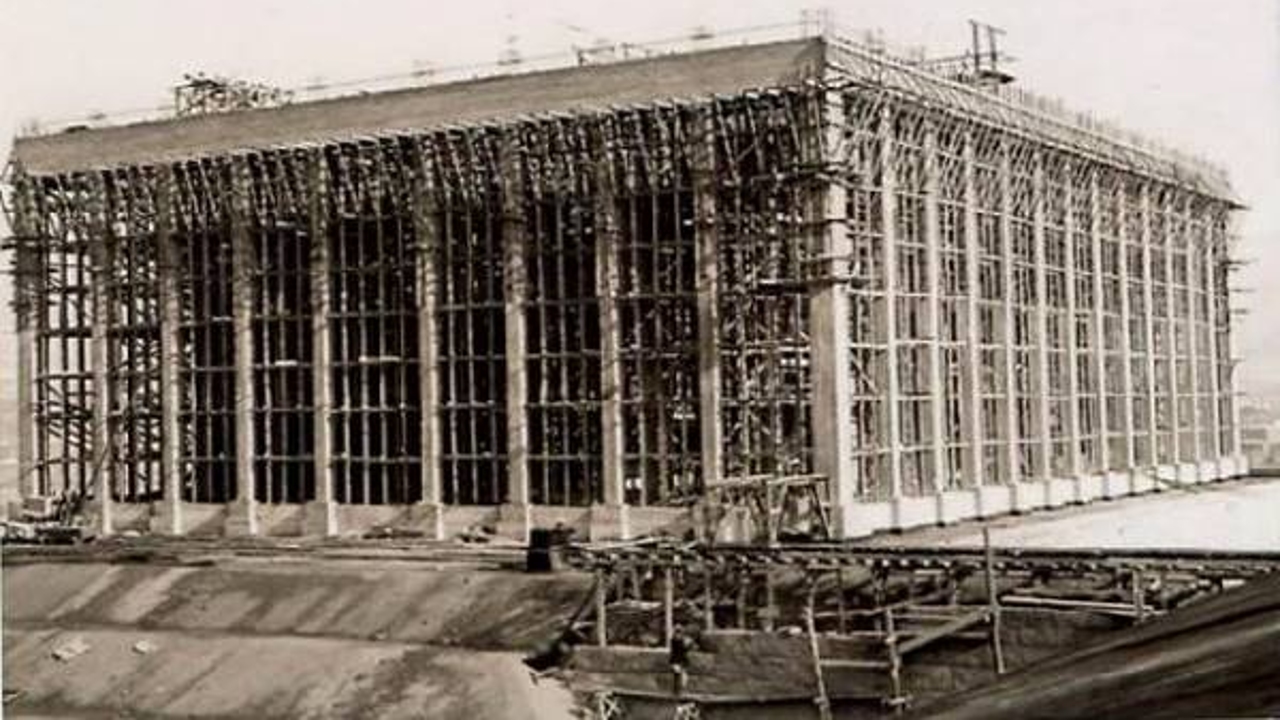
As we can see in its current state, in the construction of Anıtkabir stones and marbles was used, but since there is no stone industry that can meet this need in our newly established Republic, new quarries were sought throughout the country.
As a result of the soil strength, earthquake risk report and various analyzes, it was decided that the ground and foundation system of Rasattape should be changed, but the company that won the construction tender, which was opened previously; According to the previous plan, he ordered materials from abroad, less material is required in the new plan, and payment of the price difference by the state construction stopped for 3 years due to the legal process.
In the ongoing construction after the legal process, although it was previously approved; some changes were proposed and went beyond the architects’ plan. In this process, the architects assigned to the project were also dismissed. The most striking detail in the changes made in the project; At the top of Anıtkabir removal of the domeis.
Affected cultures, sarcophagus and burial chamber
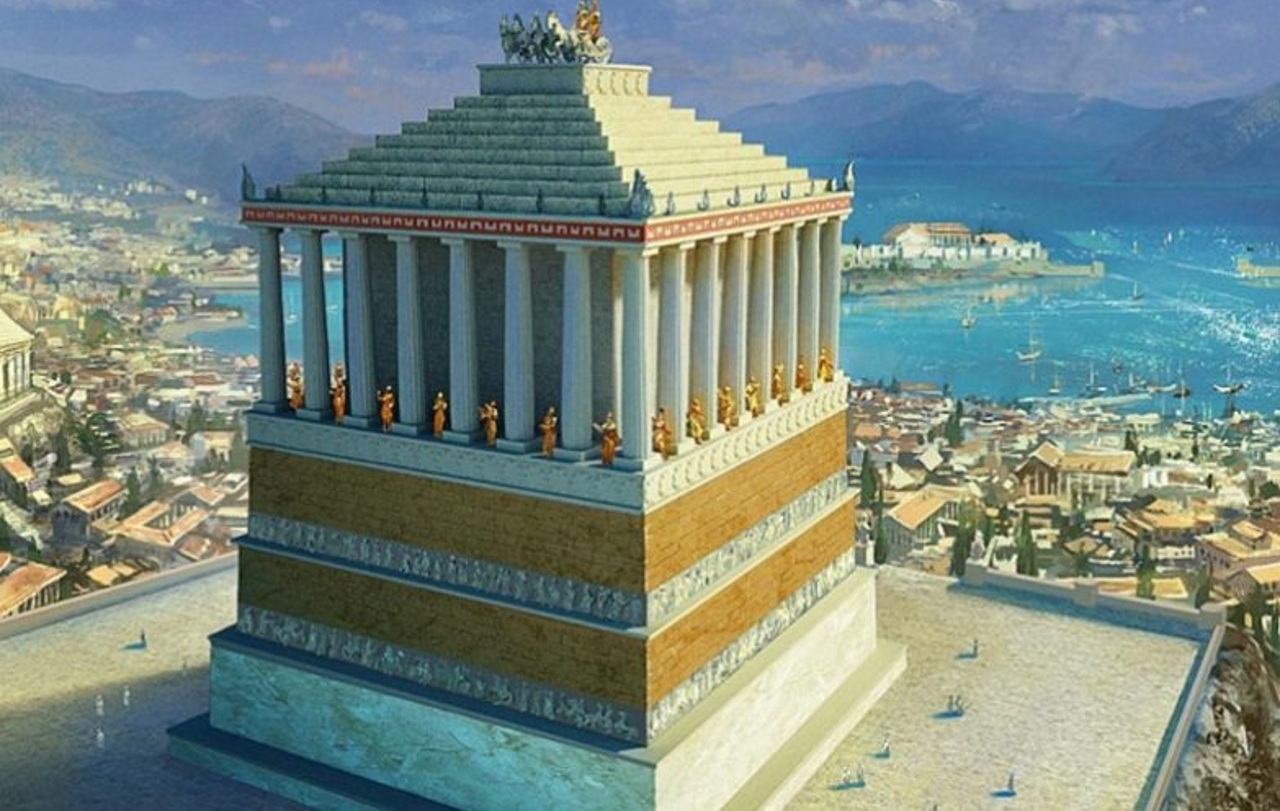
Halicarnassus Mausoleum
The synthesis of Hittite, Seljuk and Ottoman cultures, which left a great mark in Anatolia, is seen during the project and construction phase of Anıtkabir. In the design of Anıtkabir to give a message of protecting Anatolia From the Mausoleum of Halicarnassus thought to be inspired. Some sources also mention the traces of the Helen Temple in Anıtkabir.
Representative mausoleum or sarcophagus found in the visiting area of Anıtkabir, 2 pieces of 40-ton marble brought from Osmaniye custom made. The burial chamber on the lower floor of the representative mausoleum was designed in an octagonal shape, just like in the tombs of statesmen in the Seljuk and Ottoman Empire.
Completion of the 9-year construction process in Anıtkabir
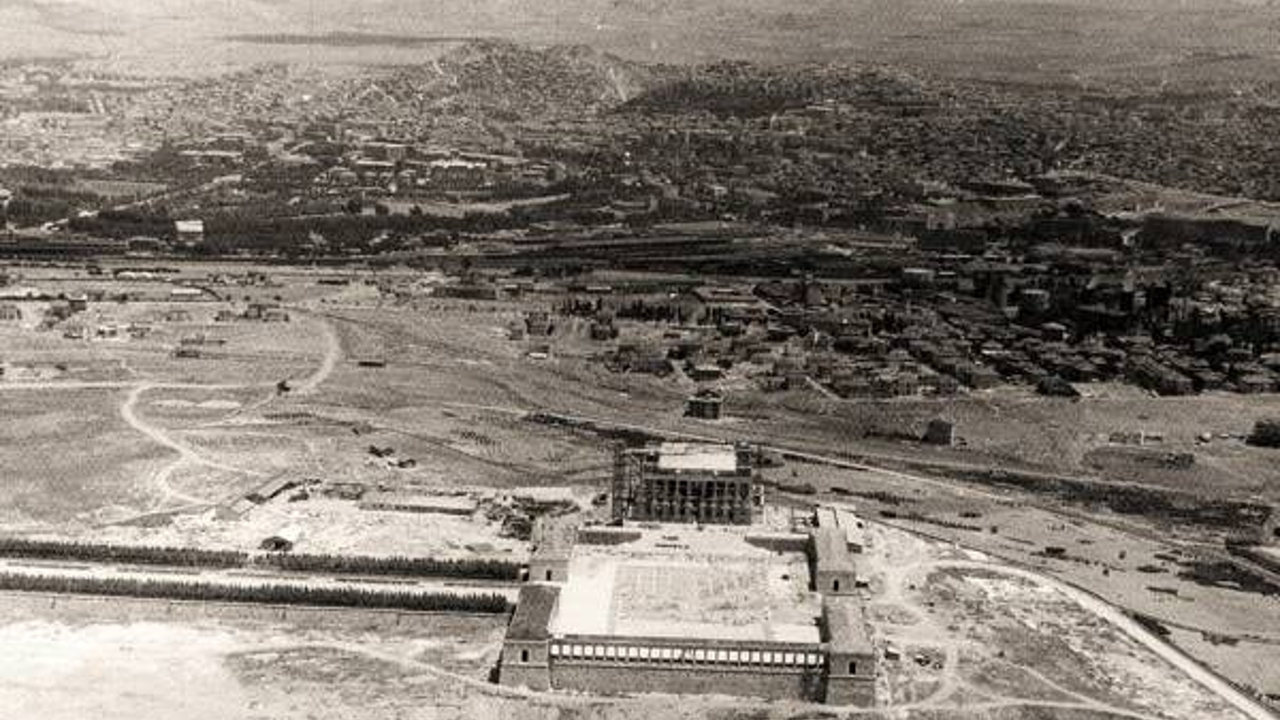
Anıtkabir, whose foundation was laid on October 9, 1944, was completed on October 26, 1953. In the project, for which a total budget of 24 million lira was allocated, 4 million savings were achieved, especially with the changes made in the last stage. of the project total cost of 20 million lirais.
Total area 750 thousand square meters The entrance gate of Anıtkabir, which is the main building, was built on the east side. The reason for this was given as the reason that the Turks came to Anatolia from the East.
Burial of the Great Leader in his eternal resting place
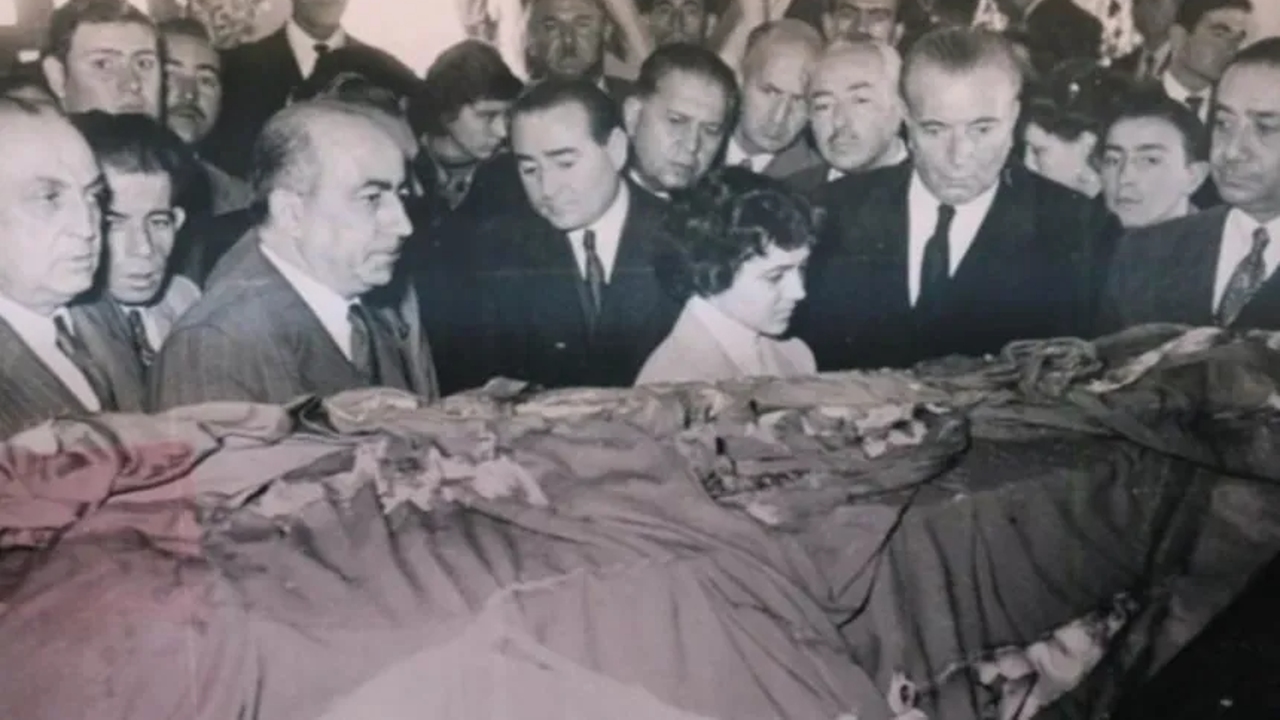
Atatürk’s temporary resting place on the 15th anniversary of his death From the Ethnography Museum to Anıtkabir; it was transported with a flood of people and military honors. President Celal Bayar, Prime Minister Adnan Menderes, Parliament Speaker Refik Koraltan, Former President İsmet İnönü, Atatürk’s sister Makbule Atadan, Prof. Fuat Köprülü, Former Speaker of the Assembly Abdülhalik Renda, a religious official and a delegation of 10 people entered.
Atatürk’s body completely according to Islamic rules while being buried; if burial ground From soil brought from 105 different places consists of. These places include all the provinces of Turkey, Cyprus, Azerbaijan, the Martyrdom of Korea, Suleyman Shah, Thessaloniki, and lands belonging to other countries that played a role in Atatürk’s life. During the burial, the piece of paper on which Celal Bayar’s wife, Reşide Bayar, wrote a surah, was mixed into the soil; prof. Dr. The detailed death report written by Emin Baran on gazelle skin was kept in a silver box and left in the grave.
After the burial, everyone in the room threw soil in turn and everyone who threw soil became ill. In the statement made to the press after the burial process, which affected everyone psychologically and fainted, was completed.Atatürk’s body has never been destroyed.It was stated that he looked as if he had shaved yesterday”.
The lands at his grave and the detail of the Turkish flag
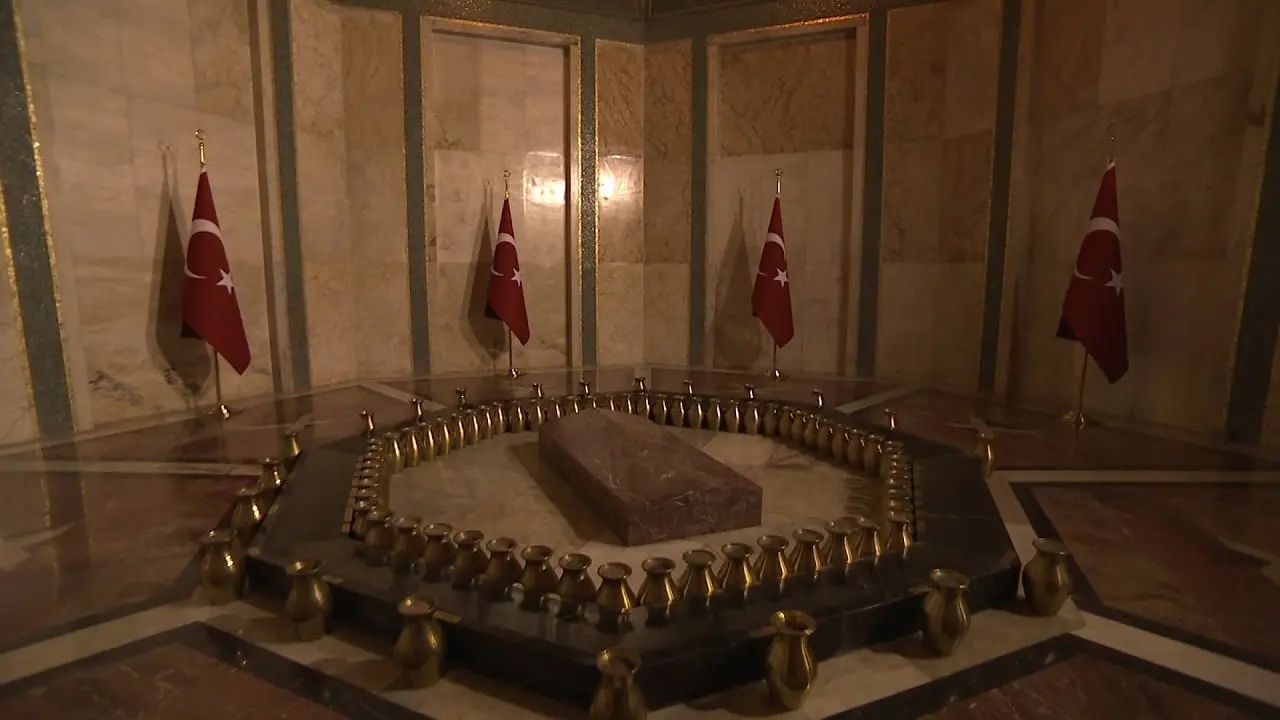
On the 100th anniversary of the birth of the Great Leader (1981), soil was brought from 67 provinces of Turkey, and lands from Azerbaijan and Cyprus were added to these 67 provinces and placed in brass vases and his tomb was turned. Due to the fact that the number of provinces is 81 today, he is now surrounded by his grave. 83 brass vases are available.
Atatürk said, “One day, of course, I will die. My people can bury me wherever they want, but I would like to see a glorious Turkish flag waving in front of my grave all the time.” There is a large window right across the burial chamber. This window is directly Ankara Castle and the Turkish flag is looking.
People buried in Anıtkabir other than Atatürk
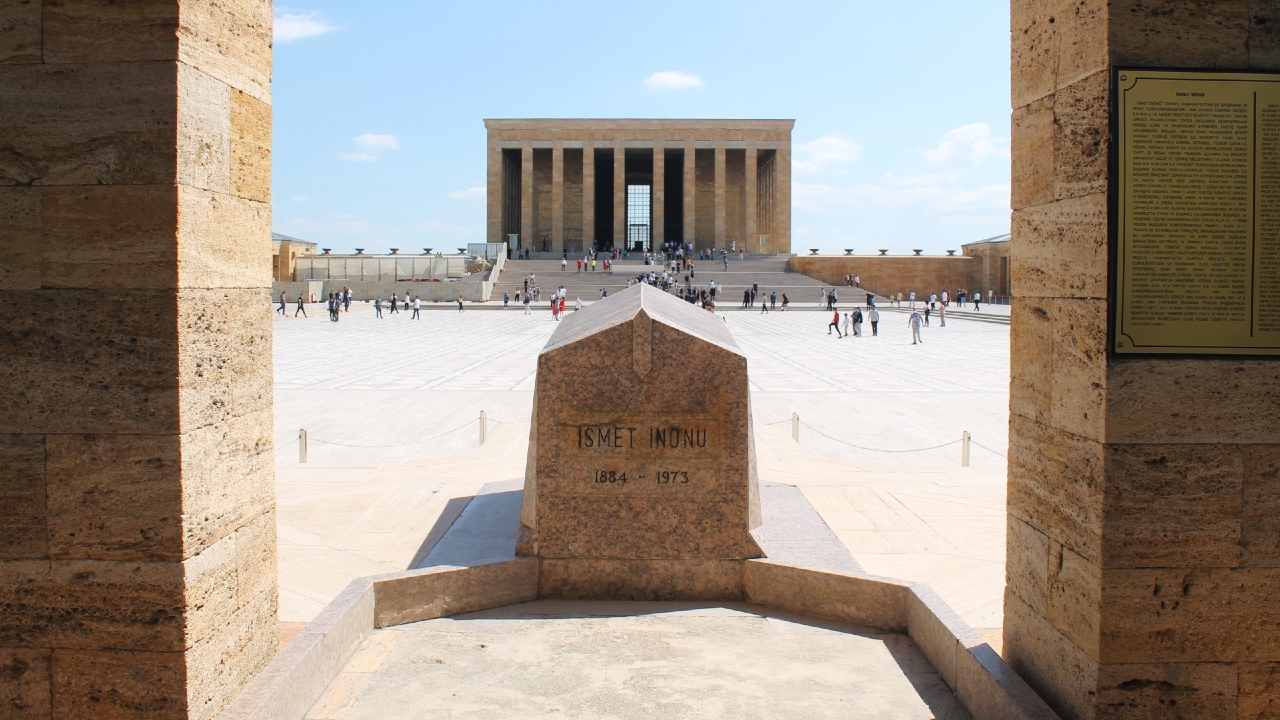
The tomb of İsmet İnönü
Apart from Atatürk, 11 more people, including former Presidents İsmet İnönü and Cemal Gürsel, were buried in Anıtkabir, but in 1988, with the statement of then President Kenan Evren, “Anıtkabir is for Atatürk, it is not a cemetery”. Except for Atatürk’s comrade İsmet İnönü. All graves were moved from Anıtkabir.
Every year on November 10, his sons run to Ata without invitation.
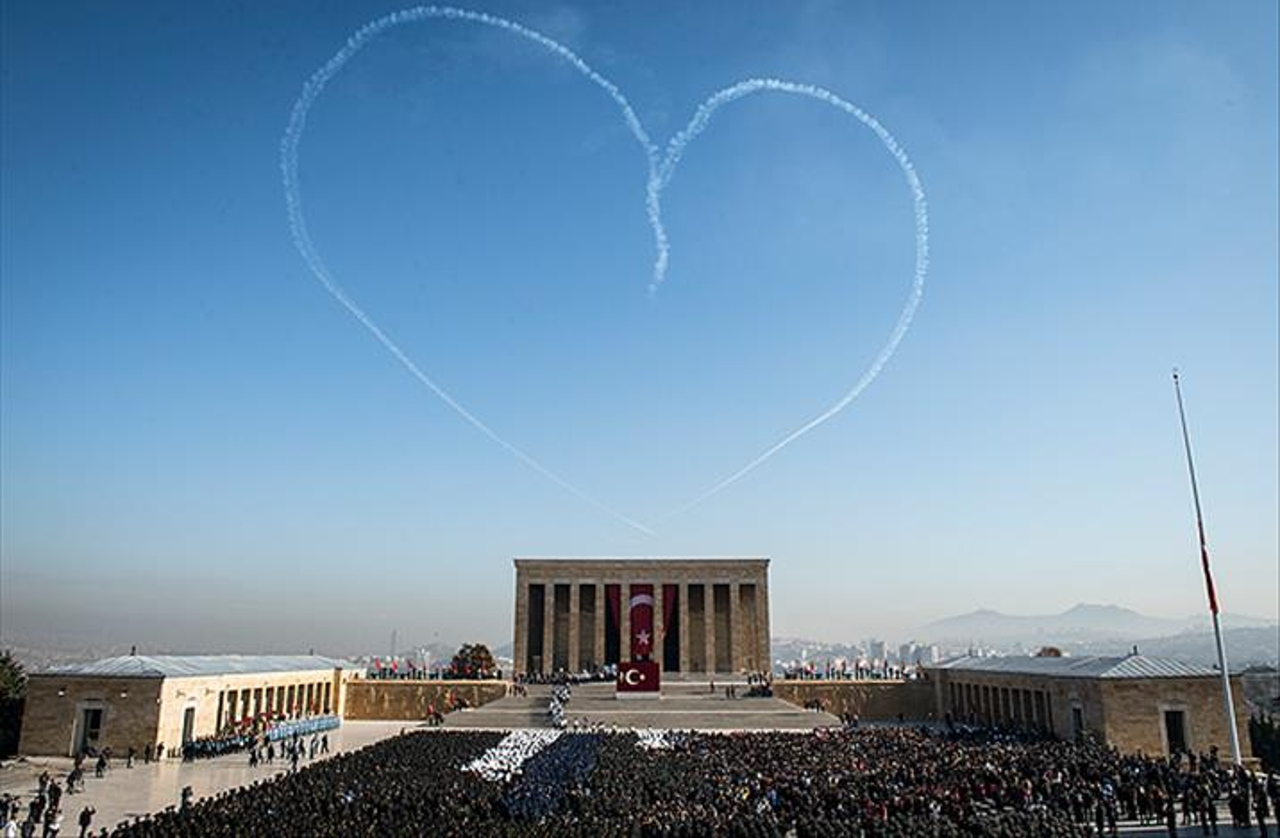
Although the number of visitors is not announced by the Anıtkabir Command, according to the information obtained, only 1,089,615 as of November 10, 2013 Anıtkabir, which is visited by many people, is overflowing with people who come to visit his Ata, especially on 10 November and 29 October.
what about you About the construction process of Anıtkabir what do you think?
resources: 1 / 2 / 3 / 4 / 5 / 6 /
RELATED NEWS
